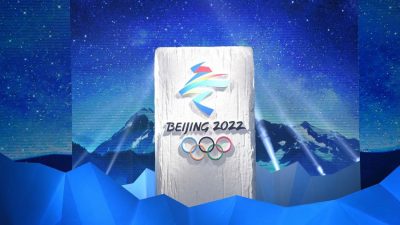The Five Broken Circles. Boycotts of Beijing Olympics. “Strategy of Containment”

All Global Research articles can be read in 51 languages by activating the “Translate Website” drop down menu on the top banner of our home page (Desktop version).
To receive Global Research’s Daily Newsletter (selected articles), click here.
Visit and follow us on Instagram at @globalresearch_crg.
***
The 2014 Winter Olympics – which opened in Sochi, Russia, on February 7, on the eve of the explosion of the Ukrainian crisis with the putsch in Maidan Square (February 18-20) – were defined in the anti-Russian media campaign as the “Olympics of Czar Putin”.
President Obama and Deputy Biden, followed by others, boycotted them accusing Russia of violating the human rights of LGBT people. Same scenario today with the Beijing Winter Olympics, defined in the anti-Chinese media campaign as “the Games of power of Xi, the Great Olympic helmsman” (La Re-pubblica, February 3). President Biden boycotted them, accusing China of violating the human rights of the Uighurs. Following the U.S., Britain, Canada, Australia, Lituania, Estonia and Kosovo (a well-known human rights defender, indicted for trafficking of human beings and human organs) declared a “diplomatic boycott” of the Beijing Olympics.
The boycott is part of Washington’s strategy of “containment” of China. China has not simply remained the “factory of the world” in which U.S. and European multinationals have relocated for decades much of their production, earning huge profits. China has realized its own productive and technological development and, on this basis, projects such as the New Silk Road: a land (road and rail) and sea network between China and Europe through Central Asia, the Middle East and Russia. Within this framework, economic relations between China and Russia have strengthened, especially after the sanctions imposed by the United States and the EU on Russia. Trade between the USA and China remains strong, but since many products on the US market are manufactured in China by US multinationals or supplied by Chinese companies, the USA has a deficit in bilateral trade of over 300 billion dollars annually.
China has also strongly reduced its investments in the US. Even more serious for Washington is the fact that the dollar share of China’s foreign exchange reserves has dropped significantly and that China is looking for alternative currencies to the U.S. currency to use in international trade, endangering the hegemony of the dollar.
Unable to stop this process that can put an end to the economic dominance of the United States, Washington throws the sword on the scales. Economic “containment” becomes military “containment”. Admiral Davidson, head of the Indo-Pacific Command – the region that in Washington’s geopolitics extends from the west coast of the U.S. to that of India – has asked Congress for $27 billion to build a curtain of missi-listic bases and satellite systems around China. “We must begin to approach China from a position of strength,” said Secretary of State Antony Blinken.
In this framework is part the Aukus, the strategic-military partnership formed by the United States, Great Britain and Australia with “the imperative to ensure peace and stability in the Indo-Pacific”. The United States and Great Britain will help Australia to acquire nuclear-powered submarines, armed with missiles certainly also with nuclear warheads, such as the U.S. Trident D5 that can carry up to 14 independent thermonuclear warheads. These submarines under U.S. command, approaching the coasts of China and Russia, could hit in a few minutes the main targets in these countries with a capacity of over 20 thousand Hiroshima bombs.
As a result, China and Russia are strengthening not only their economic but also their political and military cooperation. In their joint statement in Beijing, Presidents Xi Jinping and Vladimir Putin stressed that “Russia and China oppose attempts by external forces to undermine security and stability in their adjacent regions” and that they “oppose further enlargement of NATO.” The U.S.-NATO strategy of tension and war, which brings back to the confrontation between opposing blocs, breaks the five intertwined circles, the Olympic symbol of the five continents united for “a better and peaceful world”.
*
Note to readers: Please click the share buttons above or below. Follow us on Instagram, @globalresearch_crg. Forward this article to your email lists. Crosspost on your blog site, internet forums. etc.
This article was originally published in Italian on Il Manifesto.
Manlio Dinucci, award winning author, geopolitical analyst and geographer, Pisa, Italy. He is a Research Associate of the Centre for Research on Globalization (CRG).
Featured image is from InfoBrics

